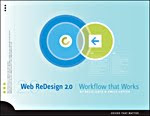Moory Christmas (late)
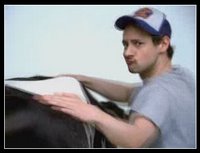 Just returned from a stint in Portland, Oregon, where, in a late-night TV binge, I encountered a Carl's Junior Commercial that just, well, has to be experienced. It's sick, and I love it.
Just returned from a stint in Portland, Oregon, where, in a late-night TV binge, I encountered a Carl's Junior Commercial that just, well, has to be experienced. It's sick, and I love it.Moory Christmas (belated) from Live Path. More soon!
Experience Exhaustion
 Tonight, I'm sitting in the lobby of my hotel in Austin Texas. There are about five large saltwater fish tanks here - in addition a realistic Santa Clause, who is jovially greeting people in the lobby. Gotta say - there's also a really sensational band here serenading people with soft rock and Christmas music. The band is like, Sting meets Jack Johnson meets Santana. OUTSTANDING. This chubby ittle guy above has been keeping watch over my shoulder. I shall call him "Squishy" and he shall be mine...
Tonight, I'm sitting in the lobby of my hotel in Austin Texas. There are about five large saltwater fish tanks here - in addition a realistic Santa Clause, who is jovially greeting people in the lobby. Gotta say - there's also a really sensational band here serenading people with soft rock and Christmas music. The band is like, Sting meets Jack Johnson meets Santana. OUTSTANDING. This chubby ittle guy above has been keeping watch over my shoulder. I shall call him "Squishy" and he shall be mine...Have been spending some time recently speaking with C-level executives about customer experience management. Very good stuff - but at the end of the day I feel like someone has "Hoovered" my brain. I've been working so much, I haven't had time to write much.
But hey -- many of you could use a break anyway after my marathon sequence on Customer Experience Management! Speaking of that series, however, -- I've gotten some really good feedback on it. The post on Customer Experience Management vs. User Experience has drawn tremendous attention.
Customer Experience Architects all over the globe seem to be networking much more actively today - engaging in great dialog, information and knowledge sharing. I'm in agreement with my pal, Kyle Coolbroth, there's a great need for us to come together. Connecting with each other - sharing ideas - is a great thing to do. So, if you'd like to join us in our discussions -- please feel free to drop me a note !
For tonight, there's no deep insight - just deep exhaustion. So I'm going to sit here with my bizarre, but fun combination: my fish, Santa, my latte, this great band.... and warm myself with the anticipation of Christmas with friends and family. Maybe tomorrow, I'll be able to think more about how to change the world. :-)
Is Customer Service the same as Customer Experience?
 Mark Hurst wrote an interesting post today about an experience he had with an office supply company today.
Mark Hurst wrote an interesting post today about an experience he had with an office supply company today. In his post, he made some assertions about the nature of Customer Customer Service that I didn't quite agree with - although I normally agree with Mark wholeheartedly. He also posed a good questions: Is customer service the same as customer experience?
First things first:
Mark Wrote: “Customer service is the job of front-line workers, servicing customer requests for help - via an 800 number, e-mail, or a retail desk.”
I was surprised that he would make this assertion. This is only true if you're looking at it through a narrow lens.
Many of us understand that Customer Service involves a heckuva lot more than customer-facing. It is not merely the job of front-line workers. Customer Service begins with the policies that govern the management of customer need. These policies are responsible for shaping customer interfacing and service delivery, and work bi-directionally across the supply chain – impacting the suppliers who create and ship goods, as well as the service reps we encounter in any channel.
We talk alot on this weblog about the five components of experience: customers, environments, brand(s), platform (process, policy, people, technology), and interfacing.
While Mark's problem wasn’t a Customer Service environment or interfacing problem (accessing service within the phone channel, or talking to the rep), it was very much a Customer Service brand issue (faulty merchandise) compounded by a Customer Service platform issue (poor return and refund policies).
While Mark is right that a larger cast of characters is responsible for hosing up his customer experience, it doesn't change the nature of his problem. Today's executives are paid to **own** Customer Service. Whether they act like it or not, this makes them stewards of our experience. The way they coordinate service - across the five CEM disciplines - will dictate success.
Nordstrom knows this. Customer Service at Nordstrom is not merely about the people they hire and train – it’s about the holistic customer service experience they offer, from the quality products they offer, the purchasing environments and the policies that govern service delivery and customer satisfaction. Good Customer Service has created the Nordstrom brand.
Customer Service is perhaps the most important component in shaping Customer Experience. But are they the same? Technically, no. However, it's significant to remember that Customer Experience and Customer Service are so strongly, perceptually bound in the minds of customers they can often be equated as the same thing.
...and perception really matters.
Interesting stats on customer centricity
 I promise, I won't issue another HUGE post for awhile! I mentioned earlier that I got hands on a recent Gartner presentation called "Gartner CRM Scenario: The Current and Future State of Customer Relationship Management." The presentation included several interesting tidbits.
I promise, I won't issue another HUGE post for awhile! I mentioned earlier that I got hands on a recent Gartner presentation called "Gartner CRM Scenario: The Current and Future State of Customer Relationship Management." The presentation included several interesting tidbits. One slide in particular caught my eye. Here's a summary of what it said:
Things that make you go hmmm.Only 41% of senior excutives think their companies deserve customer loyalty Only 19% have compensation tied to quality of service Only 24% believe their companies invest in people more than technology Only 31% agree they have the tools to service and resolve customer problems 76% think customer strategy is more important than it was three years ago 65% state their executives don’t meet with customers frequently
(Note, the Gartner presentation cited statistics from a Strativity Group 2005 Global Customer Experience Management Study.)
Customer Experience Management vs. Customer Relationship Management (Part IV)
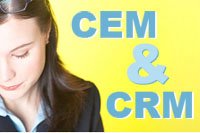 I was a bit reticent to take on this topic as the fourth part of this series on Customer Experience Management (CEM) because I think it deals a lot with perception, and the complexities thereof... but here goes:
I was a bit reticent to take on this topic as the fourth part of this series on Customer Experience Management (CEM) because I think it deals a lot with perception, and the complexities thereof... but here goes: Many individuals equate CEM with Customer Relationship Management, or “CRM”. I understand why this is the case – and do believe the original intention of CRM was to focus strategically on five components of customer experience - in short:
While many CRM initiatives attempt to address the components above, many assume a highly operational, quantitative or technical bias. To illustrate this point, ask any executive to describe the tasks associated with CRM. You'll likely receive answers that align CRM with activities such as:
Customers Environments Brand(s) Platform (systems) Interfaces
PERCEPTIONS ABOUT CRM
Establishing/managing a customer management platform Installing/configuring hardware, software, systems Enabling use of customer management & response tools Assessing, consolidating & organizing (cust./sales) data Operationally connecting & synchronizing channels Attempting to align internal business process and policies Translating programs & campaigns into new toolsets Enabling centralized metrics & analytics capabilities
Perceptions about CRM vary a little, but have been partially created by systems integrators, who have served as active leaders in the development of CRM capabilities. Such firms place a strong emphasis on technology, data management, quantitative analytics and operational alignment. These activities are necessary to lay the groundwork for technology-enabled customer management, and have often overshadowed strategic branding, marketing, program development, interaction design and other tasks.
The operational, quantitative and technical perceptions of CRM are also shaped significantly by historical focus. Over the past several years, CRM efforts have centered on establishing and refining the infrastructures necessary to enable solid customer management. The work has been highly operational in nature, and involves the resolution of complex technology, process and people issues.
REALITIES OF CRM
In the context of establishing infrastructures for customer management, CRM practitioners have fought many important battles. A large number continue to rage today - and focus on removing internal barriers (human, technology, policy, data, process) that can compromise customer experience. Unfortunately, resolving these challenges forces so much attention on getting the corporate “internal house” in order, they often compromise corporate efforts to develop, execute and measure broad, cross-channel, cross-program, customer-centric strategies and plans.
While many practitioners and CRM consultancies specialize in customer management and marketing strategy, much of this work is too narrow in scope and execution. Detailed customer analysis; designing and improving marketing strategies, programs and campaigns; developing analytic models and reporting; supporting tactical execution; and other important tasks often occur as an adjunct to larger, more technical implementations. The engagements are often too quick or too narrow (e.g. within a single or few departments) to impact large-scale customer experience or customer centricity within companies. At times, this work can even be done in a manner that is disengaged from the larger CRM initiative (e.g. disparate strategies created by different parties), creating disconnects that can hamper progress on a number of fronts.
Unfortunately, within many CRM initiatives, comprehensive strategic planning activites are simply incomplete, insufficient, delayed or non-existant. Some key activities include:
Failure to engage in comprehensive strategic planning can compromise CRM results and negatively impact return-on-investment. It can also create gaps that negatively impact customers and reinforce a fragmented view of customers. Insufficient strategic planning and alignment can help explain why it is common to find CRM implementations that drive benefits within individual programs and/or departments while larger benefits, remain unrealized. This occurs because plans for narrow execution exist, while a broad, seamless, measurable customer experience strategy is absent. This is somewhat common today, and why some critics believe CRM initiatives miss the mark.
Designing the broad picture for customer experience (CE) Designing integrated programs to support the CE Aligning programs & campaigns with each other & CE Developing customer-centric touch management strategy Defining company-wide, customer-centric, cascading metrics
THE FUTURE...
Our progress-to-date may be a natural outcome of CRM (and corporate) evolution. Even so, the mounting dissatisfaction with strategic outcomes is a key driver in the growth of the CEM movement. A proliferation of books and articles on the topic can now be found. Customer experience has become a hot topic in industry publications, and on weblogs like this one. Gartner's Q4 2005 report states that four of the top 10 CRM topics include: Building and managing customer loyalty; creating a single view of the customer; creating a customer centric enterprise; and managing/improving customer experience.*
Traditionally, CRM has had a largely "inside out" focus, which is highly operations- centric. However today, the need for more customer-centric focus is unquestionably present. In many companies today, an increased demand for strategic support in the areas of customer strategy, planning and execution is mounting. Gartner predicts that, in 2006, the number of organizations with "single view of the customer" projects will actually double.*
The development of broad, strategic plans for customer management, cross-channel integrated marketing and customer experience requires skills and knowledge that are often lacking in organizations today. This is especially true with regard to marketing organizations. **Recent studies reveal that, while CEOs view the CMO and marketing organizations as critical to bottom-line growth, many CMOs feel their organizations are underperforming, and lack the organizational credibility necessary to influence strategic transformation. Gartner also reports that one of the top, C-level enterprise-wide concerns today is that “skill gaps will impede growth.”*
To build new core competencies, create more customer-centric strategies and transform businesses, it's necessary to teach business owners how to manage customers and market differently. The scope of work goes well beyond the strategy work that occurs within the marketing organization. It must begin with the development of high-level strategies that drive a coordinated, cohesive organizational approach to managing customers.
Because of the broad scope of need, analysts seem to agree that outsourcing will play a critical role in augmenting missing strategic skill sets, and helping companies develop more comprehensive plans that drive marketing, customer management and customer-centricity to the next level.* This creates a window of opportunity for consultancies, and has driven, in part, the use of new terminology and business approaches --> and the rise in popularity of CEM.
CRM VS.CEM
The terms CRM and CEM are used inconsistently within the industry. This is prevalent even within the analyst arena, where term use seems varies slightly. Forrester Research seems to separate CEM as a unique discipline that is distinct from, but related to CRM. Gartner seems to leverage CEM as a skill set or practice within CRM. Regardless of the interpretation, however, the analysts do seem to be defining CEM in a consistent manner - and one that is consistent with the definitions in this article series.
In short, CEM practitioners attempt to address emerging market needs directly, while circumventing current perceptual biases of CRM. CRM practitioners have traditionally assumed an "inside out", or operationally centric approach to customer management and strategy. CEM practitioners distinguish themselves by assuming an "outside in”, or highly customer centric work approach.
CEM strategy focuses heavily on conducting detailed customer (demographic, behavioral, ethnographic, profitability, etc.) and environmental (market, channels, competition) exploration and analysis. This analysis is used to design broad, detailed, integrated experience strategies that answer customer needs and market opportunity. These strategies are accompanied by detailed plans comprised of multiple, integrated programs and campaigns. CEM strategies and plans are used as the drivers that shape product and service offerings refine and align customer interfaces and conform the operational platform (people, process, technology) for experience delivery, management and measurement - across channels, and over time.
Proponents of CEM assert their approaches can help remedy many of the issues created by operationally focused CRM implementations. CEM practitioners argue their methodologies enable business stakeholders effectively conceive, own and manage next-generation customer experiences, executing them across channels effectively with CRM tools. CEM evangelists promote the work has having a transformative impact on companies, asserting the customer-centric alignment and planning will naturally help focus business effort and drive operational alignment.
Whether it's for marketing reasons - or to draw a real distinction in executional approach, everyone seems to be jumping on the CEM band wagon today. This includes the systems integrators, who are developing solution sets (and entire practices) dedicated solely to CEM. A growing number of agencies and consulting firms are claiming expertise in CEM. As a case-in-point, try a keyword search on Google to see what you get...
ARE CEM and CRM THE SAME?
Some CRM practitioners dismiss CEM claims as a glossy repositioning of traditional CRM methodologies. Others argue CEM methodologies differ greatly from CRM. Individuals with a philosophical bent may argue that CEM is a "next generation" term that symbolizes a focus shift in CRM. Individual positions will vary, shaped by personal perspective, approach, scope of knowledge, area of experience and objectives.
In my opinion, it doesn’t really matter what term you choose. I’m a supporter of CRM and a proponent of CEM. I believe strongly in the "outside in" approach described in this article, because it helps mould the organization around customer need more effectively. Using CEM as an umbrella term to describe this approach, and circumvent undesirable perceptions of CRM can be a smart move, depending on your audience.
However, when I can help it, I really try not to get caught up in the overuse of buzz words and industry acronyms. I'd rather speak to the needs of my client and how best to meet them in natural terms.
Lookin' back, many of us "old timers" have been trying to get executives to support robust customer experience strategy within CRM engagements for years. Sadly, we've suffered from narrowed scope, limited resources, and we've watched as the lion's share of corporate investment has been allocated to costly technology implementations and operational work.
Whether you agree or disagree with the perceptions of CRM or the assertions about CEM - there's good news: Support for broad strategy and integrated customer experience planning is growing; Operational environments are maturing; Organizations are becoming more open to customer-centric transformation. Now matter how you spin the work, helping businesses transform, and comprehensively align to manage, measure and improve customer experience is the right thing to do. We may indeed be better positioned to do this today than ever before. If we do our work right, drive corporate success and make life better for customers. Cool.
(SOURCES: Note: Linkable resources are done so in context. *Gartner 2006 State of CRM Presentation; 2005. **B2B Magazine Study: Study: "Marketing execs still lack boardroom clout"; November 2005. Forrester Research (various articles and article summaries); Wikipedia; About.com; CRM Magazine; Thanks also to Amelia Fox and Ann Duncan for listening and “brain hockey”!)
CMOs Admit Shortcomings...And Then?
 A short interlude to our series on Customer Experience Management...
A short interlude to our series on Customer Experience Management... (Cue the muzak, Joe!)
Just saw this article in BtoB Magazine, "Chief Marketing Officers Lack Clout". The article highlights a recent CMO Council study, targeted at senior-level marketing executives at IBM Corp., Intel Corp. and Xerox Corp., other high-tech companies. The study encompassed 400 executive responses. Here are the major highlights:
Okay, for any of you who have spent time trying to help marketers in medium to gigantic companies today, this doesn't come as a shock. But as a CMO, how ashamed would you be to see this news spread around?Top marketing executives admit that their group’s performance is not up to snuff, leading to a lack of influence within the corporate hierarchy Only 10% of respondents to the CMO Council survey said their marketing groups are “highly influential and strategic” within the company. Less than half said their teams are “well regarded and respected,” even though two-thirds of CEOs polled in a separate survey by Chief Executive magazine said their marketing groups are “mission critical” for creating top-line growth. Donvovan Neal-May, of the CMO Council, is quoted in the article as saying “This study confirms marketers need to move from a tactical orientation to a more analytic and strategic approach that will enable them to realign marketing initiatives with the overall corporate mission.”
What I'd like to know is what the CMO Council thinks becoming more strategic and analytical really means! After all, most marketers believe they're strategic and analytical already.
...And why would the Council, dedicated to support the efficacy, role and function of CMOs, launch survey results in a manner that could reinforce (or further damage) the already shaky positions of these executives? I can certainly think of a stronger position to take! Why not explain why this is occuring? Why not follow up with a recommended action plan or set of recommendations.? I can certainly think of a few ideas...
STOOPID!
Beyond this, I've pointed out before, really great relationship marketing and customer-centric management is an outcome of a customer-centric company. This certainly isn't just a CMO or marketing issue. However, if CMOs today are unable to get in and make some better headway in transforming marketing and the rest of the enterprise ... they may just see heads rolling!
Customer Experience Management vs. User Experence (Part III)
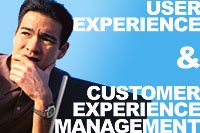 Continuing the posts on defining Customer Experience Management (CEM)… A number of consultancies and agencies equate CEM with User Experience. In our previous article, we outlined the five key disciplines, or components, of CEM.
Continuing the posts on defining Customer Experience Management (CEM)… A number of consultancies and agencies equate CEM with User Experience. In our previous article, we outlined the five key disciplines, or components, of CEM. User Experience, or “Usability” is focused on the interface discipline of CEM. The term is used primarily in reference to the analysis, design and/or development of human-to-technology interfaces. Some examples of this include creating, refining and managing:
User Experience is an important part of CEM, but like Experiential Marketing, it’s a part of a much larger whole. User Experience architects center their focus creating functional, intuitive interfaces (online or systems applications and technological devices) that enable customer interaction and transaction. CEM practitioners focus on the comprehensive interaction of customers in both online and offline channels.
Contrary to popular belief, User Experience is both an art and a science that requires a complex array of skills. Individuals who “do” usability can’t possibly embody all skills, although if you find a rare individual that does, you should pay them a mint! Dave Rogers of gotomedia recently wrote an excellent article about this in the gotoreport. Many of us will resonate with Dave’s frustration. To underscore Dave's assertions, here’s just a sampling of the functional roles that might found on a more complex user experience project:
While it might be natural for any individual to assume 2-5 of the roles described above, many of you feel the pain of being asked to manage many – or all – of the roles outlined above yourself, or within a limited internal team. My advice to you: Keep educating your company about the nature of user experience with articles like this one. Be sure to tangibly demonstrate the results and forge ahead! Fortunately (job security) and unfortunately (you may have no-life!), this isn't likely to get much easier. The demand for user experience professionals is likely to increase. Here's why:
1. Electronic channels are being integrated into traditional channels with increased frequency – and usability professionals are instrumental in helping us become more proficient and creative about how we use them. From increased integration of coupons, kiosks, wireless promotion… we’ll see more folks with traditional usability expertise being drawn into the broader CEM discussions. For example, the kiosk design team may be included in discussions on how to optimize kiosk use with in-store placement and visual positioning.As consumers continue to adopt new technology, and utilize technologically driven channels for interaction and transaction, user experience (human-to-technology) competency will continue to be a critical factor in driving effective customer experience. This is especially true as technology continues to evolve and devices begin to mature and converge, generating entirely new products and services for consumers.
2. Companies are beginning to apply more concentration on creating a more “seamless” customer experience across channels. Collectively this will force an increased demand for individuals with expertise in mapping out comprehensive experiences and designing interactions. This is a much-needed skill that must be applied within, and across traditional channels in order to effectively track and streamline the larger customer experience.
3. User experience resources are accustomed to a customer centric design bias (vs. business centric bias). They are therefore more familiar with behavioral customer dynamics – in addition to channel dynamics, and greatly suited to helping design interactions from a customer-centric perspective.
4. A growing awareness within companies for the need for user experience staff will drive increased hiring capability. This has already become visible in the job market today, as increasing number of user experience job descriptions present themselves. The ongoing challenge will be getting the position descriptions correct. As Dave points out in his article, most companies expect way too much from single resources.
Usability, as a part of CEM, will work to ensure technologically driven customer interfaces meet customer need, while additional attention will be focused by CEM practitioners on streamlining, synchronizing and improving holistic customer experiences across online and offline channels.
Customer Experience Management
vs.Experiential Marketing (Part II)
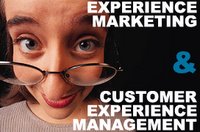 Continuing the dialog on defining Customer Experience Management (CEM)...
Continuing the dialog on defining Customer Experience Management (CEM)...Many individuals equate CEM with Experiential Marketing. However, the term "experiential marketing" has become perceptually aligned with marketing execution in recent years. This is because it largely focuses on developing highly visible, stimulating, interactive and sensory-engaging environments in which products and services are showcased. As such, experiential marketing is an important component of CEM, but it isn’t the “whole enchilada” (Ole').
The environments experiential marketers focus on are diverse. You'll often find a large emphasis on shaping the "walk-in" experience of brick and mortar environments. This is done with the goal of creating more positive, intuitive, memorable, engaging and pleasing environments which better engage, entertain and support customers. Some examples of this include:
Museums and galleries. Because they focus on creating a sensory experience, museums and galleries like the Guggenheim, the Smithsonian, and the San Francisco MOMA have always had a high level of focus on how to create the proper experiential environment for visitors and have therefore been proactive in the application of new technology to enhance experience and both preserve works of art for future visitors.Experiential Marketing carries with it as strong association with event-driven marketing. In the past, this has been primarily associated with trade shows, technology showcases and industry conferences. Howver, today, event-driven marketing tactics are becoming increasingly popular in non-traditional venues, such as:
Stores. Retail outlets that sell goods are placing increasing emphasis on developing more experiential environments. Visit REI and spend some time on the climbing walls available for public use. Walk in to a Build-A-Bear Workshop and create a custom toy, complete with a voice chip, for a friend or loved one. Other, more obvious experiential retail environments include Apple Stores, Niketown, the American Girl stores. More subtle examples include Sephora, Anthropologie, Origins and Libby Loo.
Restaurants. It's not just about food anymore. Restaurants are getting into the game, as well. Almost all of us are familiar with the time-tested experience offered by Chuck E Cheese. Some more modern examples of the Rainforest Cafe and Planet Hollywood. You don't have to be big to be experiential. My five year old niece's favorite restaurant is Sushi Takahashi, because of the circular sushi bar and the circling model train which delivers your order. My brother and I like it because the sushi is great, and cheap.
Non-traditional Environments, and is alive and well in several popular grocery chains, such as Wegman’s and Whole Foods. We’re also seeing forays into experiential marketing within the financial services (e.g. ING Cafés), health care (e.g. Minute Clinic) and other industries.
Microsoft's somewhat recent and highly successful multi-venue Tablet PC promotional event. Born out of a partnership between Microsoft and the Jack Morton agency the event resulted in 125,000 product demonstrations in high-traffic airport terminals in major hub airports across the country.As marketing becomes increasingly experiential in nature, the lines of demarcation between event-driven marketing and other promotions are becoming increasingly cloudy. For example:
Another example was featured recently in a recent CMO Magazine article on B2B experiential marketing. The article highlights IBM’s Merlin Center, an experiential environment created to effectively demonstrate the future of high technology banking to bank executives. The experience starts in a living-room like environment featuring warm biscotti and coffee. It gradually transitions into an experience that has been described as a "virtual themepark for banking executives."
Adrants recently gave a hat-tip to Lexus, which drew attention for strategically placed experiential displays positioned in Times Square and a several other key US locations. The displays, placed at sidewalk level in shop windows, featured a “holographic” animation of the IS in motion - zooming, spinning, turning and driving within the store window space. Interactive kiosks allowed visitors to control the display features, such as the color of the car. The displays drew substantial attention and shut down street corners successfully as onlookers jammed busy sidewalks.Experiential marketing also applies heavily to the online world, where the constant drive to innovate and improve customer experience and dynamic qualities are ever present. Product searching, personal recommendations, reviews, rating tools, list sorting/filtering and wish lists become common features of top retail and/or promotional sites.
Experiential marketing promotions were also featured in recent episodes of the hit TV show “The Apprentice.” In several shows, the teams were assigned the task of creating innovative marketing campaigns for Dick’s Sporting Goods and Tide, as well as innovative product displays for Best Buy’s video release of Star Wars III.
Today, companies strive to press the envelope of traditional interactivity further, to improve site and application usability. In addition to utilizing rich media, flash, DHTML, Java and Ajax to bring new, more engaging and effective sites to bear, an increasing number of companies are making good use of other techniques. Viral microsites, gaming, downloads and eCards are being used to help encourage site interaction and visitation. Blogs and podcasting are adding a whole new dimension to site interactivity and content. Product customization, enhanced products and services are an emerging trend.
Nike allows customers to create and customize their own athletic gear at NikeID.com.It occurs to me that I'm preachin' to the choir now. Many of you are highly familiar of the tenants of experiential marketing - and I haven't even addressed how the really great experiential marketers pay so much detail to interaction, they work to refine person-to-person interaction within these environments (e.g. the W Hotel), or engineer product displays to boost the efficacy of merchandising - among other things. However, in the interest of length, let's move on to discuss how experiential marketing relates to CEM.
Online stores like Lands End and The Gap’s "Watch Me Change" viral site allow customers to create customized avatars, based on the peronal height, weight and body style attributes. The avatars can “try on” selected clothing for the customer and allow style and fit comparisons. In the case of The Gap, you can also get them to perform an entertaining strip tease for you, and pass it along to a friend.
In addition to hosting an online car configurator, Mini Cooper has an interactive site somewhere (sorry, couldn't FIND the flash application while writing this article!) showcasing a wide number of customized roof wraps customers can puchase for their cars. The artwork includes the british flag, sci-fi scenes, the Mona Lisa and much more.
The Converse Gallery offers independent film makers the ability to submit 20 second short films, dedicated to the Converse brand. Many of the high quality "shorts" are now serving as part of Converse's national advertising campaign.
Unfortunately, many executives are being seduced by the flashier side of experiential marketing and can mistake it for CEM in its pure form. A cadre of agencies now purport to have expertise in experiential marketing and readily capitalize on opportunities presented by market shifts, retail expansion and new technologies. Typically, however, such agencies execute work within a relatively narrow scope - compared to full-blown CEM project work.
Confusion between experiential marketing and CEM often forces attention away from the real value and tangible benefits of CEM initiatives. The differentiation the two can be succinctly described as follows:
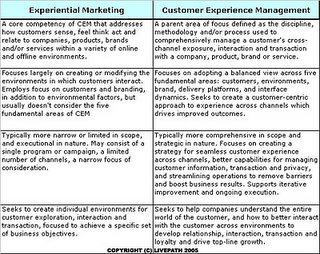
In closing, I'm not a huge fan of buzz words or hype. It's a simple truth that everything we do as marketers is experiential at some level - from the brand assets we create, to the packaging, collateral, IVR scripts we write, or the stores and web sites we manage. We have complete control over how "experiential", engaging or stimulating we are, and how perfunctory the interactions we design become. At times, perfunctory is better... and at other times, engaging, stimulating and sensory-involving is better.
Whatever the case, the companies that are faithful in the "little things" will be granted much more. Each little customer interaction is a highly valuable part of a larger set of interactions. The outcomes of customer interactions shape brand perception. Customer interactions should therefore be strategically designed and executed to work together to collectively lead the customer in an appropriate (and positive) direction that compliments personal goals and business objectives. This is the core focus of CEM.
The true leaders in customer experience understand these principles. They are adamant about creating experiences within channels - and across channels - that are intuitive, consistent, engaging, cohesive, safe, relevant, seamless, memorable and satisfying for customers. Experience leaders never get caught up in flash over substance, but leverage experiential marketing as an effective tool to gain exposure, attention and customer mindshare. They focus a great deal of energy on becoming increasingly proficient in the principles of Customer Experience Management.
Defining Customer Experience Management (Part I)
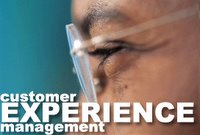 A growing number of books and articles are actively promoting the concept of Customer Experience Management (CEM). Popular leaders include Bernd Schmitt, author of “Customer Experience Management” and "Experiential Marketing". Joseph Pine and James Gilmore, co-authors of the book, “The Experience Economy” have also gained a great deal of exposure. You may have read “Managing the Customer Experience” by Shaun Smith, or “Customers.com” by Patricia Seybold. You may also have seen articles about and Harvard Professor, Gerald Zaltman, author of the book How Customers Think. There are also a growing number of agencies and consultancies claiming expertise in CEM – all with varying degrees of involvement and expertise in the arena.
A growing number of books and articles are actively promoting the concept of Customer Experience Management (CEM). Popular leaders include Bernd Schmitt, author of “Customer Experience Management” and "Experiential Marketing". Joseph Pine and James Gilmore, co-authors of the book, “The Experience Economy” have also gained a great deal of exposure. You may have read “Managing the Customer Experience” by Shaun Smith, or “Customers.com” by Patricia Seybold. You may also have seen articles about and Harvard Professor, Gerald Zaltman, author of the book How Customers Think. There are also a growing number of agencies and consultancies claiming expertise in CEM – all with varying degrees of involvement and expertise in the arena.While there’s a clear reason to become a staunch supporter of CEM, there’s a great deal of confusion over what it really is. As more individuals get on board the CEM band wagon and build services in the arena, confusion seems to be increasing. It’s time to demystify the hype:
Defining CEM
While no individual really “owns” the term “Customer Experience Management,” it is often attributed to Bernd Schmitt who, in 2003, defined CEM as “the process of strategically managing a customer's entire experience with a product or company." Building further on Schmitt’s definition:
The term "Customer Experience Management" represents the discipline, methodology and/or process used to comprehensively manage a customer's cross-channel exposure, interaction and transaction with a company, product, brand or service.
Five Functional Areas of CEM
When we look at the nature of Customer Experience Management, there are essentially five key areas that CEM practitioners or “Experience Architects” examine. While these are broken down consultants in slightly different manners, based on individual methodologies, they can be described, at a high level, as follows:
1. The Customer. CEM analysis focuses on developing a multidimensional understanding of customers. This understanding includes cultural, sociological, behavioral and demographic analysis, and culimates in a detailed ability to articulate the needs, wants, desires, expectations, conditions, context and intentions of various customer groups. This understanding informs audience segmentation and guides the prioritization of key segments. Customer analysis is proactively benchmarked against a company’s capability to meet customer needs - both in a present and future state capacity. Customer understanding therefore serves as the primary driver in shaping the business approach, aligning strategy and investment.
2. The Environment. Examining the “landscape for brand discovery” is an essential tenant of CEM. This landscape is comprised largely of market conditions, competitive factors, channel use (and channel/cross-channel dynamics), the process for purchasing (steps to buying), the “real” purchasing environment (store, phone, web, etc.) and the service environment. Leveraging this knowledge against customer analysis, CEM strategists work with companies to create integrated plans, which “order the paths” customers commonly follow in the purchasing process. These multi-path strategies work to ensure customers have an intuitive, pleasing experience at every step in the journey to brand discovery. As a part of Environmental Analysis, strategists also focus on applying experience innovation to customer environments, which remove barriers that confuse, inhibit, discourage or de-motivate customers, and create a more engaging, efficient, pleasing, personable or memorable environment within which to interact.
3. The Brand. From a tactical perspective, this analysis involves the development of visual identity, assets, tag-lines, communications, logos and other brand assets that help shape perception and define the brand in the marketplace. From a strategic perspective, however, this analysis focuses on innovation and differentiation. This includes the consistent and iterative evaluation, planning and refinement of product or service features, functionality, pricing, options, attributes, benefits and positioning of the company, service or product.
4. The Platform. A company’s operational infrastructure is the platform on which customer experience is delivered. As a result, operational efficiency has a direct impact on customer experience. As companies move from an “inside out” focus (on internal operational constraints such as production, capacity, etc.) to an “outside in” focus (on customer-centric delivery), operational analysis is essential. This includes comprehensive evaluation and improvement of people, process, policies, technology and systems that facilitate, track and measure customer interaction and transaction. CEM Platform analysis may include technology implementation, workforce evaluation, fulfillment and logistics analysis, process improvement, systems analysis, policy reviews and a myriad of other tasks. The goals of platform analysis include streamlining operations, increasing time to market, removing barriers to customer satisfaction, lowering costs and improving the overall customer experience by creating operational excellence.
5. The Interface. This area of CEM analysis focuses on the interaction between consumers and the brand, from a human-to-technology; human-to-human; and human-to-environment perspective. Simply defined, this area focuses on refining and optimizing the customer interaction within any channel to produce desired and pleasing outcomes. At a tangible level, CEM Interface analysis may center on improving the usability of electronic applications or products (e.g. a web site, a TIVO interface; or the buttons and information flow on a cell phone). However, it also concentrates on optimizing the interfaces within other channels, such as brick-and-mortar outlets. CEM strategists focus on how customers interact within, and across channels, often examining the end-to-end shopping and service delivery process. This may include task-based analysis of various interactions and transactions, such as a customer's discovery, browse, shop, purchase and post-sale experience. CEM practitioners focus on improving the quality and efficacy of customer dialog. This may include conducting analysis of the call-center or voice-response systems, as well as optimizng the approaches of sales or other customer-facing staff.
It’s relatively easy to find individuals who can work within one or two of the areas above. What separates CEM practitioners from the pack an adamant dedication to examine all five functional areas with companies to develop truly cohesive strategies and plans that result in tangibly improved customer experiences and better business outcomes.
It's easy to confuse CEM with CRM, Usability and "Experiential Marketing" ... we'll talk more in future posts about how it all fits together.
Resources for this article include materials produced by Bernd Schmitt; Joseph Pine/James Gilmore and other authors referenced in the initial paragraphs of this book.
eHarmony Strikes a Bad Chord!
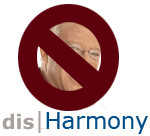 This is a bit of an intermissionary gripe session with a lesson attached for all those managing customer dialog and privacy.
This is a bit of an intermissionary gripe session with a lesson attached for all those managing customer dialog and privacy.I think I have grown to personally dislike Dr. Neil Clark Warren. He's the founder and public face of eHarmony.com. Because of this, can’t help but personally hold him responsible for six months of harassment from his company.
Out of curiosity, I signed up for a free eHarmony trial on May 15, 2005. I ended up canceling it after just a few days -- It just wasn't my thing. Unfortunately, eHarmony not only screwed up my account, I've had SIX MONTHS of interaction trying to get off their mailing list, yet they continue to spam me with unsolicited email!
Many of you read my previous post about spam problems with Ancestry.com and eHarmony. I promised to keep you informed, and the comments attached to the post reveal the outcome of the Ancestry.com issue.
Sadly, with eHarmony, things have gotten worse. After months, it seems pretty clear that the operational infrastructure in place for managing both privacy and customer inquiries at eHarmony is insufficient and unharmonious!
From a customer experience perspective, this is a great case study on how not to manage customer relationships. Here's a rundown of my ridiculous eHarmony experience:
5/12 I signed up for a free trial (this yielded more than six emails in five days! Very annoying!)
5/19 I requested cancellation via email
5/19 Got an automated response confirming receipt of my cancellation request
5/19 Got a personal response to cancellation request - telling me to call in to cancel.
5/19 I phoned in and got voicemail - The office was closed for a meeting
5/20 I phoned again. Got voicemail - The system was down for maintenance, and it was a Friday - and they were closed on the weekend. My seven day trial was ending and I didn't want to be charged.
5/20 I emailed my demand for cancellation again and warned them not to charge me. I also reiterated that I didn't want any future email from them. I had previously gone into my profile and cancelled all opt-ins.
Note: They didn't cancel my account and charged me $49.95 anyway.
5/26 Got a personal email from Cecelia at eHarmony confirming the cancellation of my account and subscriptions, and confirming issuance of a $49.95 refund.
Note: I thought the saga had ended... but...
6/9 Got a renewal reminder notice from eHarmony, reminding me that my account was expiring
6/9 I sent an inquiry asking why they asked me to renew my cancelled membership. I also reminded them that I had opted out on several occasions and should not be getting any email from eHarmony.
6/9 Got an automated response confirming receipt of my email
6/13 Got a personal email response from Louise saying eHarmony had cancelled account and all subscriptions
6/25 Got an eHarmony monthly Newsletter
6/25 I sent another email complaning about spam and warning them of Can Spam violation. Got no response to this email although there was no bounce when I sent it.
6/27 Got an email requesting my feedback about eHarmony (!?)
6/27 I sent some very harshly worded feedback complaining about their violation of the Can Spam act.
6/29 Got an automated Response from eHarmony confirming receipt of my email
6/30 Got an email from Armando at eharmony assuring me eHarmony has taken me off all mailing lists.
Early July - another email newsletter came. I angrily deleted it.
7/21 Another email Promotion Arrived: Win a Cruise for eHarmony's Couple of the Year - saved this one by mistake.
Mid August - Another Newsletter arrived. I angrily deleted this, too.
9/19 Another eharmony Newsletter.
9/25 Another Offer: Start Communicating Today: 3 for the price of 1!
10/20 Another eHarmony Newsletter
11/16 I sent eHarmony a letter warning them of legal action, with a complete rundown of my contact history. The title was "Warning of Legal Action"
11/16 Got an automated Response from eHarmony confirming receipt of my email.
11/17 Got a personal letter from eHarmony (Viviana) telling me that unfortunately, they could not extract my photos for attachment to my profile. (????)
11/17 I sent an even angrier letter back, copying everyone possible. Also filed a complaint with the FTC and TrustE.
It's clear that eHarmony has invested a lot into the wording of their stock responses. Lord knows I've read enough of them! Unfortunately, it's also clear that their processes for managing customer inquiries are insufficient. It's also very clear that they have a flawed infrastructure for managing consumer opt-out, which makes me question the solidity of their privacy promise, as well.
According to Federal Can Spam legislation, eHarmony is obligated to take me off all mail lists within 10 days of my request. This means that after 5/29/2005, they should have stopped bugging me. This was approximately six months ago, minus two weeks. eHarmony - consider this article my anniversary gift.
The lesson is this: Fluffy words and promises can't make up for ridiculously flawed experience. You must deliver! It's impossible to deliver if your infrastructure is a mess! Drop the ball once and you may be forgiven. Drop the ball twice and you'll probably lose your customer. Drop the ball repeatedly and you may lose more than one customer as your pattern is established. You may also violate state or federal law and run the risk of being sued.
If any of you have had problems with eHarmony please share your stories with me! I will keep you posted on the continuing saga. :-P I have conducted a bit of research on eHarmony and have discovered a NUMBER of sites that catalog customer experience concerns and complaints - many of which will surprise you! Check out these links to read for yourself!
Back in the Saddle
 So, I'm back in town and working on some writing and other work. It's hard to come up with anyting profound right now. I think may have left my brain on a beach in Hawaii! This was my second trip there, and it was outstanding. After teaching, I spent my time on the S's - Surf, Sand, Scuba, Snorkel, Sleeping and Sushi. Got lucky with low surf for a spectacular day of diving. There's nothing quite like swimming through coral canyons and caves... or laying on the sandy ocean floor blowing bubble rings and watching them rise to the surface. I've posted some of my photographs on Flikr... More later. - L
So, I'm back in town and working on some writing and other work. It's hard to come up with anyting profound right now. I think may have left my brain on a beach in Hawaii! This was my second trip there, and it was outstanding. After teaching, I spent my time on the S's - Surf, Sand, Scuba, Snorkel, Sleeping and Sushi. Got lucky with low surf for a spectacular day of diving. There's nothing quite like swimming through coral canyons and caves... or laying on the sandy ocean floor blowing bubble rings and watching them rise to the surface. I've posted some of my photographs on Flikr... More later. - L
Bathroom Usability
 As many of you know, I am currently doing some teaching and doing a little rest and relaxation in Hawaii. Yesterday, I watched a Japanese woman helplessly fuss with the paper towel dispenser in a public restroom at Hanauma Bay: She was trying to pull the shreds of paper towels out of the greedy jaws of the dispenser, not realizing there was an "inviso handle" that would unjam the towel jam. After helping her out, I got to thinking:
As many of you know, I am currently doing some teaching and doing a little rest and relaxation in Hawaii. Yesterday, I watched a Japanese woman helplessly fuss with the paper towel dispenser in a public restroom at Hanauma Bay: She was trying to pull the shreds of paper towels out of the greedy jaws of the dispenser, not realizing there was an "inviso handle" that would unjam the towel jam. After helping her out, I got to thinking:Forget web sites and technology interfaces for a minute. What about public bathrooms? They generally rank high on the "suck meter" for usability and customer experience. Here are just a few common irritants:
- Horrid stall doors with locks that never seem to work
- Hand dryers that wouldn't blow an eyelash of your skin
- Toilet and sink sensors that play hit or miss games
- Soap dispensers that regularly fail, or are empty
- Small, narrow, wall-mounted garbage bins overflowing with trash
- Double roll vice-grip dispensers that will not dispense the T.P.
- Banked sink counters, which collect puddles of water that A) dampen your personal property if you set it down; and B) Dampen your garments if you lean in to wash your hands
- Airport bathroom stalls too narrow for a person and a roll-aboard
Who was the braniac that invented the gigantic roll of one-ply toilet paper?!
"Giganto-roll" is inevitably too heavy (unless half empty) to rotate with a single ply pull. in, find free end of the paper, and pull it to get a few squares --- or some shreds. Pull it again - get more shreds, which will begin to litter the floor.
To get enough paper out of a Giganto dispenser - installed above shoulder level while sitting, you must twist at the waist and, in awkward feat of acrobatics, reach over to pull the paper with one hand while "coaxing" the wheel of paper around with your other hand. I call this move the "Twist and Shuffle."
If you are lucky enough encounter a Giganto Roll installed, as they often are, below the handicap railing - at armrest level - you get to try an even more sophisticated move. While twisting, you must also bend at the waist to reach up UNDERNEATH the dispenser to blindly locate end of the toilet paper, and then shimmy the giganto roll around in circles. I call this move "The Angry Squirrel"
Now, while you are in the impossible act of squirreling away to get your measly squares of TP from the dispenser you will often get another thrill. This one is one of my favorites (NOT). As you bend over, the automatic toilet flush sensor will inevitably pick up your movement and WHOOSH -- flush the toilet while you're in mid-squat! Let's call this the "Involuntary Water Ride." Awful!
After you recover from your in-stall experience, compose yourself, leave the stall to endure the entire handwashing experience, you must then check yourself for "Clingons" - the micro shreds from the failed Giganto pulls .... clinging to your pant cuffs and/or shoe heels. Charming!
Okay, so probably enough time dedicated to this subject. Maybe I'm just too jet-lagged to be more profound, but I thought his was worth mentioning. Don't even get me started on the "Perch and Hover" (We've ALL done that!).
As for a solution? I dunno. I'm not sure there's really enough incentive for anyone to improve bathroom usability. I mean, it's not like they'll give out an award for public bathroom innovation. But who knows -- it's the era of social media where people have more power! It sure would be nice to see some improvement.
So all you architects and contractors out there: some food for thought! ;-)
The image is a picture of complicated, multi-function toilet which frightened my pal, Kelly Goto in Japan. This is probably proof that things won't be getting easier for us any time soon.
Free: Not Always a Good Price
 I'm a true fan of free web content when it's high quality. I find value coming out of sites like Marketing Profs.com and Marketing Sherpa all the time - as well as several blogs listed on my resource page. However, there are days when I get what I pay for.
I'm a true fan of free web content when it's high quality. I find value coming out of sites like Marketing Profs.com and Marketing Sherpa all the time - as well as several blogs listed on my resource page. However, there are days when I get what I pay for. For example, I recently listened to an archived, free Webinar called "Speak and Get Results: Maximizing Your Impact During Webcasts" offered by a popular site on the web. The speaker, 25-year executive coaching veteran with a PhD in Psychology, seemed to promise alot. So, I came in with high expectations. However, his delivery was very disappointing:
--> Stopped midstream to ask moderator how to advance slides
--> Had to silence his own ringing cell phone midstream
--> Boring text/graphics in "mud" tones
--> Featured FIVE slides of pictures of himself(!?)
--> Drifted off verbally - seemed to be multitasking on something?
--> Tonality seemed a little patronizing - lots of simple repetition
--> Encouraged us to "watch the audience response" - during a webcast?
--> Not specific to web-based speaking/presentation
--> No summary of prescribed action or steps to take
--> No provision of helpful resources or checklists
--> Easy to get a tickle when you're talking... but please excuse yourself when you hack repeatedly !
Ultimately, the elements above damaged his delivery as well as my experience. I couldn't help but think, "Maybe he had a bad day, poor guy!" So, in interest of fairness, I reloaded the audio and listened to the entire presentation - beginning to end. While he had some decent points about enunciation, tone, and breathing, I still wouldn't recommend the webinar and had great trouble sitting through it.
Afterward, I did a little thinking and decided to put together my own list of best practices for effective web-based presentation... Now, I'm no PhD... just a chick that's thinking out loud. This is definitely free advice, so be warned that may only be worth what you pay for it. ;-)
Wonderful image is courtesty of a young artist from public school district 68 in Nainamo, British Columbia.
Tips for Effective Web Presentation
As follow-up to my post, in which I slammed a recent webinar presenter's efficacy of presentation ... Here's my own checklist of best practices for delivering a good web-based presentation:
Planning Your Pitch
Develop a clear picture of audience needs, desires, problems
Structure "the story" & plan out flow: Intro, Body, Close
Keep it simple: limit to a number of key points (e.g. 3-5)
Use only helpful visuals to reinforce concepts
Strive to meet your audience needs - not self-promote
Clearly develop the "next step" recommendation
Meet with meeting partner to discuss flow, ideas & needs
(if applicable)
Before Your Web Presentation
Master material: Don't read a script -have a conversation!
Practice: tape yourself/ watch & listen or get feedback from others
Do a tech dry run; know how to use meeting tool(s)
Do a content dry run to verify timing & pace
Provide your bio to the moderator and discuss introduction
Silence cell phones, pagers and computer IM/Audio
Include barking dogs, mewing cats, screaming children as necessary!
During Your Web Presentation
Welcome your audience with enthusiasm
Introduce yourself and briefly outline key presentation objectives
Use a brief web survey to get to know audience
Share survey results with audience to build community
Tailor your pitch (e.g. examples) midstream toward audience
Provide real life examples that demonstrate cause & effect
Periodically reference slide visuals/numbers to help audience follow
Speak at a clear, even, and reasonably slow pace: R-tik-U-Late.
Exhibit passion, conviction and inflection
Smile while you are talking - it actually comes across.
Do make sure you breathe - it loosens you up and unkinks things!
Use pauses to reinforce points or build transitions
Avoid "gap filling" with words or phrases like "ummm" or "anyway..."
Closing Your Web Presentation
Summarize key points and underscore recommended action
Thank the audience and moderator for their time
Provide a list of helpful resources
Open the floor for questions
If you don't have an answer to a question, offer to get one
Provide appropriate contact information
After Your Pitch
Consider sending incentive or thank you to your audience (e.g. link to slides, a free book or white paper) to reinforce the bond you develop with your audience
Make sure you're tapped in to post-presentation feedback survey feedback!
Obtain any previously agreed upon audience leads & conduct follow-up
Refine and tweak your presentation (content, style, points) to address feedback
In conclusion, using online meetings can be a highly engaging and effective way to use time and close distance gaps for remote teams. Today, there's a really low barrier to entry for anyone, and applications like WebEx and GotoMeeting (which both offer pay-per-use options) make it easy and cost-effective to run high quality online discussions.
Following these basic, common sense rules can help anyone develop and deliver a more successful web-based presentation. Feel free to post your own tips, comments, ideas, links or questions by adding comments below.
Planning Your Pitch
(if applicable)
Before Your Web Presentation
Include barking dogs, mewing cats, screaming children as necessary!
During Your Web Presentation
Closing Your Web Presentation
After Your Pitch
In conclusion, using online meetings can be a highly engaging and effective way to use time and close distance gaps for remote teams. Today, there's a really low barrier to entry for anyone, and applications like WebEx and GotoMeeting (which both offer pay-per-use options) make it easy and cost-effective to run high quality online discussions.
Following these basic, common sense rules can help anyone develop and deliver a more successful web-based presentation. Feel free to post your own tips, comments, ideas, links or questions by adding comments below.
Leavin' and Teachin'
 What's scarier? The ghosts and ghouls of Halloween, or spending 12 hours on a plane?
What's scarier? The ghosts and ghouls of Halloween, or spending 12 hours on a plane? Okay, let's face it. The marathon flight wins! Mine will be made worse by the fact that I could only get coach class and an aisle seat on a packed flight tomorrow. <:-0 Cue the Psycho music and a scream of terror! At least it isn't a middle seat!
Your pity will end as I state that I'm leaving for Honolulu, where I'll be teaching a User Experience Intensive at the University of Hawaii. The courses are a part of the University's Extension Certification program in Web Design. I'll be filling in for my buddy, the highly esteemed Kelly Goto.
While it will be nearly impossible to fill her shoes, looking forward to combining much of her wisdom and my own knowledge, to present material from Kelly's internationally best-selling book, "Web Re-Design: Workflow that Works". Here's an overview of the Intensive:
User Experience Intensive
The University of Hawaii has a rich tradition of bringing in strong faculty from respected companies like Adobe and Macromedia to support these extension programs. The course work is highly interactive and tailored to meet the needs of the students who attend -- and, of course, it's in Hawaii! Who wouldn't want to go? Consider it for the future! For more information, on the web certification program, click here.
Lesson from an Indian Chef
 I love my neighborhood. It's simple and interesting. While it hasn't arrived yet, it has the potential for great charm. Within a half mile of my house there's quite a cadre family owned restaurants. They are, like my neighborhood, simple and culturally diverse: Peruvian, Salvadorian, Thai, Iranian, Persian, Mediterranean, Korean, Italian, Afghani, Vietnamese can all be found within a stone's throw.
I love my neighborhood. It's simple and interesting. While it hasn't arrived yet, it has the potential for great charm. Within a half mile of my house there's quite a cadre family owned restaurants. They are, like my neighborhood, simple and culturally diverse: Peruvian, Salvadorian, Thai, Iranian, Persian, Mediterranean, Korean, Italian, Afghani, Vietnamese can all be found within a stone's throw.In this day of homogenized experience, theme parks, strip malls and chain restaurants, I love the culinary mix I find here. I also love the people I encounter. Seeing these family-owned businesses in action is a joy. Over the years, I have watched teens grow up behind the counter and move on to college. I have come to recognize the regulars - family and friends of the owners - who drop in for meals and banter. Supporting my local cafes and restaurants makes me feel more connected to my community, and it's an all around good experience.
Yesterday's experience was a particularily good one. After skipping breakfast and lunch, my stomach was growling horribly. I decided to walk down to the newly opened "Bombay Cafe", which had taken over space formerly inhabited by an internet cafe.
I was curious to see what they'd done with the place, and at first glance, it was unimpressive. The space looked smaller. Its funky earthy metallic and cement design had been painted over: white walls, white floors, simple front counter with a buffet behind glass. However, as I entered, an array of color to the right caught my eye. I turned to find a an enormous spread of beautiful, exotic looking sweets. They were organized on platters in a U shaped formation, like a hotel buffet. I remembered that it is the season of Divali - the Indian Festival of Lights.
I paused to take in the sight of the sugary goods -- and then prodded myself toward the front counter to find something a bit healthier to gnaw on. From behind the counter, I was greeted by a very tall, broad shouldered Indian man. He was evidently blind in one eye, which had taken on a greenish hue, and had very long hair which had a reddish henna tint. At first, he intimidated me a little. However, after telling him it was my first visit and congratulating him on the opening, he seemed to warm to me.
The man, who later introduced himself as "Koop" (pronounced "cope") asked me what I wanted, I grinned and said, "I think I'll let you choose for me." This seemed to make him happy - and he rapidly prepared three plates of food for me to sample. Then, he popped into the kitchen to make me fresh, hot, naan.
In short, it was culinary extasy! There wasn't one thing I didn't like.
We talked about his business. I learned that Bombay Cafe is Koop's fifth restaurant. He owns three other cafes and a high-end four star restaurant. He told me about his import business and proudly stressed that they only use premium, authentic ingredients -- like tender Indian cashews. As I listened, it became clear that Koop is an excellence junkie who takes pride in his work.
I asked if he gave cooking lessons. He laughed and told me I wasn't the first to ask -- and then excitedly filled me in on his plans to open a cooking school inside the cafe in the coming months. He promised, that by taking his classes, I would come to know how the art of Indian cooking "comes from deep within."
After consuming a third of the spread Koop generously provided, I could not eat another bite. Grinning, he handed me a takout container. I pointed to the layout of sweets, I asked if they were preparing for a party. "Ahh" Koop replied, "we'll go through these in about a day" he said.
It turns out, the buffet sweets are sold by the pound to walk-in customers, and that sweets are an enormous part of Koop's entrepreneurial enterprise. Pointing to his new (second of two) 400 square foot cooler, he explained that in addition to his restaurants, his bakery supplies Indian restaurants and markets with sweets from the Carolinas all the way up to New Jersey!
He then walked me over to the smorgasbord of sweets, taking me from colorful platter to platter, describing how each item was made. He then took out a box and helped me select a small sampling of delicacies to take with me. I paid a very reasonable price for for my food, and thanked him for his time.
As I prepared to leave, Koop shook my hand, gave me his card, thanked me for my business and asked me to keep in touch. I left, having spent much more time in the cafe than intended -- but feeling a fullness that went well past my stomach.
Koop made my experience something I won't soon forget. At first glance, he's just a regular guy. Looking deeper, he's a family man; a very smart business man; a fabulous chef. Koop does what he loves. He is passionately interested in food and people. Koop works with a sense of purpose and passion -- and it shows in his treatment of his customers.
Koop embodies something we all need to remember: It only takes one person to turn an every day experience into something extraordinary. We all have this potential, and when we rise to it, we can provide our customers with enriching experiences that result in relationship and affinity.
Image courtesy of Namaste.com - Great site for authentic Indian ingredients, recipes and other items.
Why, AOL?
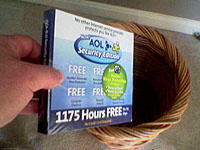 Since 1995, my mail has been regularily loaded with free discs from AOL.
Since 1995, my mail has been regularily loaded with free discs from AOL. Back in "the day" at 1-800-FLOWERS, we began calling the disc mailings "coasters." We used them (in the packaging) to put our coffee on. We occasionally flung them at each other like weapons when we were hopped up on caffiene. I think I might still have a few scars.
For some reason, it has never mattered to AOL that sending me discs may have been futile: For six of my coaster-laden years, I already had an AOL account. Now that I don't, I'm getting a coaster about every six weeks.
The fact is, this practice works for AOL: It has disc mailing thing down to a low-cost science: Every time they send out a mass disc mailing, they get a spike in new membership. It doesn't matter that many respondents only sign on for the free period... they're still members, and AOL can take this to the bank.
But, please tell me why it doesn't make sense to put a predictive response model in place that will filter out someone like me, who has not, since 1997, responded to an AOL offer! Tell me why it makes sense to send these discs to individuals who already have an AOL account, and will merely throw them away?
AOL knows they're a nuisance. They even poked fun at the fact with their Snoop Dogg ads a year or two ago. Remember the commercial where the family created a wall sculpture (a fish) out of useless discs?
In the early days the coasters came in a flat, square cardboard mailing... but now the packaging is getting even more environmentally irresponsible and obnoxious: I now get them in plastic jewel cases, metal containers, or better yet - the DVD-like cases, none of which are recyclable. Today's behemoth is pictured above. It's actualy cardboard (thick) ... wrapped in plastic. The call to action claims that no other service provider will protect me like AOL.
I say no other service provider irritates me like AOL. This mailing isn't compelling, interesting or relevant to me. Beyond not being interested, I hate having to deal with throwing it away. I can't help but picture landfills overloaded with AOL coasters: A result of domestic and workplace pileups for more than a decade. I actually feel a little hostility toward AOL for forcing me to figure out how to responsibly throw away this useless mailing.
If AOL wants to hook me today, they've got to think beyond 15-year old marketing tactics. Why not send me a low-end digital audio player with free downloads each month on AOL Music, in exchange for a monthly signup? Why not send me a postcard that says "we've missed you" with a come back offer that is truly different and relevant to me? Why not do some market research and offer premium services (e.g. Love@AOL.com) free for a short time period, in exchange for a discounted yearly membership?
Now, I'm writing this purely from the perspective of a frustrated consumer. Sending me more junk just isn't going to cut it, AOL. It won't work for thousands of other consumers, either. So, until you can get more creative, please take me off your mailing list!
When Less is More
 I'm standing in the grocery aisle, scouting for my favorite toothpaste, and notice a perplexed man pacing next to me. I look up and smile. He is scratching his head. Apologetically, he looks up. "My wife told me to get 'Crest regular toothpaste'" he says, "Nothing looks regular to me."
I'm standing in the grocery aisle, scouting for my favorite toothpaste, and notice a perplexed man pacing next to me. I look up and smile. He is scratching his head. Apologetically, he looks up. "My wife told me to get 'Crest regular toothpaste'" he says, "Nothing looks regular to me."I decided to help. However, I soon became mesmerized by rows and rows of Crest toothpaste. I'm not kidding - six shelves stocked with Crest toothpaste - stacked 15 boxes deep, in places...I couldn't back up enough to get them all in this photo!
Not one of the shiny boxes looked like the traditional Crest -- in fact with the exception of a few packaging variations, the toothpastes (rather than the gels or the liquid stuff) looked pretty much the same to us both.
The search for traditional Crest toothpaste got to a point of silliness... Eventually, the man sighed and picked up a box in frustration. He left positive he'd chosen the wrong thing and left to face his wife.
Later on, in a fit of hotel room boredom, I became curious to know just how many types of toothpaste Crest offers. So, I did a little investigation. The Crest website features more than 50 types of Crest toothpaste. Some overlap categories, but here's a rough overview of the product offering:
The list does not include a wide array of toothbrushes, flosses, tapes and rinses which contribute to extra shelf space.
This begs the question: Is more really better? When product choice interferes with a customer's ability to find a product they really like, maybe it's not such a good thing!
I learned this important lesson early on, when I was helping establish the interactive services division for 1-800-FLOWERS. In one of our 16 online stores, we had placed 30+ arrangements within a single product category (birthday). The products in each category had varying price points - from $19.99 to $150.99, yet our conversion rates were low, and we noticed we were taking a lot of web-generated calls asking for assistance with birthday orders. So, we ran a test: We limited our category to 10-15 best selling arrangements that offered variety and covered the same price range. The result: Our online order conversions on birthday increased by a staggering 40%.
What we've learned from testing category assortments for consumer products is that many products don't actually equal more conversion. Many similar products within the same price range can often equal confusion -- and overwhelm the customer.
Now, having an assortment of 15 items isn't always feasible or realistic, especially in an era of product proliferation. The lesson there is, where selection is robust, users must have the ability to quickly filter and/or compare by preference to find what they want.
In-store merchandising is a different game than online merchandising entirely. In bricks, a brand's in-store promotion, real-estate domination and shelf positioning are critical. Therefore, if you've got six shelves of product - you've got instant brand positioning and a statistically higher percentage of being chosen by the consumer. Based on the picture above, Crest was certainly winning that battle at my local Giant store. In the end, even though Crest frustrated and confused the customer - they did succeed in getting brand positioning and the sale. :-D
In this era of information and marketing saturation, many of us would logically agree that sometimes, less is more. This sentiment will hold true until you or I fail to find our favorite type of laundry detergent, diet soda, ziplock bag, soup or box of cereal! Then we may become indignant about a lack of choice. ;-D
More than a shoe?
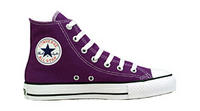 Geez. I just spent 30 minutes on the Converse web site. I innocently stumbled upon the "Converse Gallery,".
Geez. I just spent 30 minutes on the Converse web site. I innocently stumbled upon the "Converse Gallery,".It's a pretty engaging site, featuring a number of 24-second independent film shorts that are positive, quirky, highly creative and "inspired by converse." You'll note several of them being featured as TV ads. I saw one on VH1 last night.
The Converse Gallery definitely appeals to the film major in me... but it's worth a tour for anyone! While it's hard to choose a favorite, I suggest you mouse over the gallery selector (bottom of the page) and check out:
- Amazing Russell
- Lucky Laces
- Dogs
- Giant Leap
- Charles
- Reflections
- Doubles
- Fishy
- Phlip
- John's Polka
- Spin the bottle
I'd love to see a customer-based rating system for these films!
The short films do a decent job of demonstrating that this brand is more than a shoe. It's about history and nostalgia. It's about culture and individualism. The brand is an experience; it's a lifestyle. Even if you don't wear it, you'll recognize it.
Now, the site can overwhelm a browser with a cacophony of product choices - from the bad to the plaid. You'll find the staple shoes as well as innovative new designs from Chuck Taylor and Jack Purcell. Grab your traditional shoe, or check out professionally endorsed gear by Dwayne Richards.
However, as broad as the product choices are, it occurs to me that it may well represent the broad reach Converse has with its audience.
Anyway -- it's a real treat. Enjoy!
Experience Probe: Northwest Air
 Little things mean alot. That's why, when I run into small experience issues that are rich in meaning, I like to point them out on this site. They often help demonstrate bigger considerations for experience design.
Little things mean alot. That's why, when I run into small experience issues that are rich in meaning, I like to point them out on this site. They often help demonstrate bigger considerations for experience design.Last night, I called Northwest Airlines' Reservation and Flight Status information line, to make reservations for a flight (800-225-2525). Here was the interactive voice response (IVR) sequence:
Welcome: we are glad you called the Northwest Airlines Reservations and flight status information line...
Now, I recognize this is my fault for having poor listening, but it was prompt #3 that tripped me up: I had to listen to the message twice because I heard Canada but not the United States - and it momentarily threw me.
After thinking about it, I realized this is a great mini case study that helps demonstrate how business needs, customer ethnographics, channel and behavioral dynamics influence customer experience.
Business Needs: Reservations is the third prompt on the list. It's probably #3 because because Northwest wants to push status checkers to use the automated information line to lower incoming phone inquiries (and costs). We might logically expect the Reservations prompt to be #2 on the list. However, this is for World Perks. Perhaps Northwest elevated World Perks to the second prompt in an effort to reduce manual call transfers to World Perks agents (more efficient and less costly). This demonstrates how business needs can dictate or influence the structures of these systems and this resonates with most of us (stating the obvious, perhaps).
Ethnographics: The first country mentioned on the reservations prompt #3 is Canada. It's a small nuance in the scripting that made me go "hmm." Northwest is a U.S. based airline with more flights in the United States than any other country. I did wonder, "Why Canada first?". Does my expectation to have the U.S. listed in first prioirity make me another egotistical, ethnocentric American? Probably! ... A small example of how ethnographics can influence experience.
Channel dynamics: Let's face it, when you're in a voice response system, it is easy to become distracted, become mesmerized by the automated voice, forget prompts, tune out, get confused and / or become stuck in "voicemail jail." Fortunately Northwest seems to understand this: Pressing # twice rolls the caller to a very friendly representative.
Behavioral dynamics: Should I have listened better? Without a doubt. We've talked a little about "selective filtering" before. Simply defined, this is the adaptive process people use to process and ignore advertising and media messages. Selective filtering influences listening, as well. While I couldn't find any scientific numbers to support this idea, here's some food for thought:
When I'm using automated voice response systems,I believe I may have a seven or eight word listening threshold per prompt. On prompt #3, the words "United States" were 10th and 11th - and respectively filtered! I'd love to find some more research on how these dynamics are impacting IVR scripting today. I can say from my experience with fortune 100 companies, most of today's IVR scripting is governed by marketers using systematic logic, rather than science.
And one more thing -- context impacts behavioral dynamics, as well. Me? I was checking Travelocity when I called Northwest... If a you're multitasking while dialing or clicking, your experience can be directly compromised. Perhaps you're juggling a kid on your lap, driving in the car or answering your front door. It's hard for experience designers to plan for these scenarios, but this does demonstrate how context plays in to customer behavior. As multitasking becomes increasingly popular, and attention continues to splinter, this is something to consider!
In closing, my experience with Northwest was, no doubt, different than yours might be. I very well may be one of the rare few who pressed # to listen to the prompts twice. You may not have noticed anything different -- or you may have noticed other issues. For example, if you are Spanish-speaking, you could be disturbed by the lack of a Spanish language option.
The Northwest system isn't poorly scripted. It's just a great little case scenario that helps demonstrate how business needs, ethnographics, selective filtering, channel and behavioral dynamics have a direct impact on customer logic and experience. As we architect experiences for our customers, we need to envision these dynamics at play on a larger scale, and plan accordingly.
Consulting Speak Detox
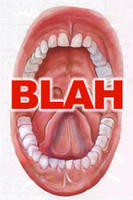 For those of you who don't know, I recently left my position with a former "big five" consulting company. I was there for six years and got to work for a lot of really cool clients and very smart people who I shall miss!
For those of you who don't know, I recently left my position with a former "big five" consulting company. I was there for six years and got to work for a lot of really cool clients and very smart people who I shall miss! Upon entry, six years ago, I swore I would never succumb to "consulting speak." I thought I was strong enough to make it. I strove to edit my presentations to use words like "people" or "individuals" instead of "users." I fought off the acronyms. I resisted the jargon, but somewhere along the line the environment finally got the better of me.
My dear friend recently ran an intervention. Ashamed and broken, I immediately checked myself in to a detox program.
I, Leigh Duncan, will now refrain from using the following words for at least six months (and after that with extreme care):
- Implementation
- Configuration
- Operationalize
- Critical path
- Mission-critical
- Cross-functional
- Any Acronym that represents a business or government agency
- Any Acronym representing financials, proposals or forms
I have also been asked to refrain from the following activities:
- Taking a thirty thousand foot view
- Doing a sanity check
- Building a straw man
If you catch me lapsing into old habits, please feel free to call me out.
Shaken by Contextual Ad...
There was a really great example of the potential hazard of contextual advertising in Adrants today... Check out the CNN.com page -- look at the banner and the headline story. D'oh!
Experience Healing on Marketing Profs
 There are lots of folks "preaching" about good customer experience - but making it happen is a tall order. About a month ago, I wrote a piece that called attention to the need for individuals who can work in a "healing" capacity with today's companies to make them more customer centric, and able to create and manage positive customer experiences.
There are lots of folks "preaching" about good customer experience - but making it happen is a tall order. About a month ago, I wrote a piece that called attention to the need for individuals who can work in a "healing" capacity with today's companies to make them more customer centric, and able to create and manage positive customer experiences. Well, the article seems to have struck a chord with a few people. I've gotten some good mail about it. This week, the piece ran on the Marketing Profs website. Please feel free to read it and send me your feedback. ;-)
Sux 2 Get Mktg Txt Msgs
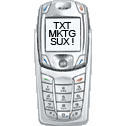 I've noticed since AT&T was acquired by Cingular Wireless that I am being Text Spammed on a regular basis. I held out as long as I could, but finally did a blanket opt-out. Wireless device marketing sure has a LONG way to go... and I hope they wake up soon. My thoughts on the subject:
I've noticed since AT&T was acquired by Cingular Wireless that I am being Text Spammed on a regular basis. I held out as long as I could, but finally did a blanket opt-out. Wireless device marketing sure has a LONG way to go... and I hope they wake up soon. My thoughts on the subject:1. IRRELEVANT
"Cingular free msg: Want AOL IMs forwarded to your phone when away from your PC? Reply IM to this msg. Std. msgs rates apply. Send STOP to 3711 to end mktg msgs."
Okay - so I already do this. Don't they know this?
Wireless companies have incredible segmentation opportunities for cell phone users - using behavioral, purchase and geographical data. They've got a great opportunity to leverage this data to create more relevant solicitations in the future.
For example, it's a little risky to send a customer who does not have an account history of downloading or purchasing games or ringtones repeated solicitations for game and ringtone downloads. Instead, why not segment the messages:
Segment 1 - No history of games:
"Cingular Free Help Msg: Have fun playing Tetris, Solitaire & Football games on your phone! Try them FREE now by replying "GAMES" to this msg. To stop game msgs reply "STOP" to this msg."
Segment 2 - Active history of games:"Cingular Free Game Msg: Leigh, we've got Sonic the Hedgehog and 10 other NEW games! Try them FREE by replying "GAMES" now. To stop game msgs reply "STOP" to this msg."
Time to think out of the box. Send relevant and valuable offers. The stuff people look up regularily can be scheduled as a sponsored "push" delivery! How about local movie showtimes, for example? What about restaurant reviews (with $ off offers), or other kinds of valuable offers? How about an online app that lets me create my own personalized ringtone? Just a few thoughts...
2. INTERRUPTIVE
BEEP BEEP -- BEEP BEEP. In the middle of my conversation, dinner or meeting. Cingular is interrupting me again.
A sales person would be stupid to walk up to me, in the middle of a conversation and holler in my ear -- or slap on the back. The wireless companies should realize that they have the capablity to do the same thing to wireless consumers.
It's time to develop new alert mechanisms for marketing messages. Why not allow customers to choose when to view the messages or hear alerts. Change the ringtone for marketing related messages to something pleasant, gentle or low. Why not create high profile special inboxes for customers that hold marketing messages? Why not add loyalty program features(e.g. perhaps you'd get points for each message you read that equate to a discount your phone bill or added minutes)?
By all means - get Cre8ive! But 4 heaven's sake, don't B rude!
3. IMPERSONAL
The lack of personality and creativity in text marketing messages is ridiculous. I've had my service for six years. By now, you think they'd address me by name. Instead, I get a flat, robotic message. How about this instead:
"Hi Leigh: (Insert brief message) We won't text you often, but you may opt-out by sending "STOP" to 3711. ;-) -Your friends at Cingular."
Wireless marketers have limited windows of opportunity - maybe 2-5 messages to get it right before customers opt-out. When customers opt-out, companies loose the right to market to individuals through one (or many) channels - permanently. Seems like a little more care and caution are in order!
Subscribe to:
Posts (Atom)
POST HISTORY
FAVORITES
- On Trust & Influence
- Don't be Social Media Sharkbait
- The Social Media Engagement Continuum
- 10 Tips for Twitter Unmarketing
- Five Experience Funamentals
- Experience & Branding: The Three Word Rule
- Get Some Experience Healing!
- Discovering Customer Experience Pitfalls
- Not My Job: The CX Enemy
- Shoe Carnival: Watch Out for Carnies!
- Bathroom Usability
RECENT COMMENTS
SEARCH
LEIGH DURST

I’m Leigh Durst, a 20 year veteran in business, operations, customer strategy, ecommerce, digital & social media and marketing. Simply put, I’m a strategist that helps companies (start-up to blue chip) achieve business shift, create more compelling online and offline experiences. I also write, speak and teach about experience design and next-generation business. I’m a futurist, visionary, strategist, doer and connector with a passion for people and helping others. When I’m not on the road, you’ll find me in the San Francisco bay area, working, beaching it and hanging out with my family and dog.
Labels
advertising
air travel
bank experience
bathrooms
Best Practices
branding
brick and mortar retail
charlene li
Community
Content
Copy writing
cottonelle
customer centricity
customer experience
customer experience files
Customer Experience Leaders
customer experience management
customer experience pitfalls
customer experience; innovation;
Customer Relationship Management
customer research
CX
Defining Customer Experience Management
economy
Ethics
experience best practices
experience file
experience pitfalls
good customer experience
Group Think
Harassment
infrastructure
Innovation
life
marketing
marketng
motherhood
old navy
personal
Plagiarism
Plurk
privacy
reinvention
RESOURCES
restaurant experience
retail experience
security
Social Media
Social Media Expert
social networking
starbucks
stuck
target
toilet paper
trust agents
trust continuum
Twitter
usability best practices
user experience
user experience
UX
Web 2.0
Web Strategy
word-of-mouth


